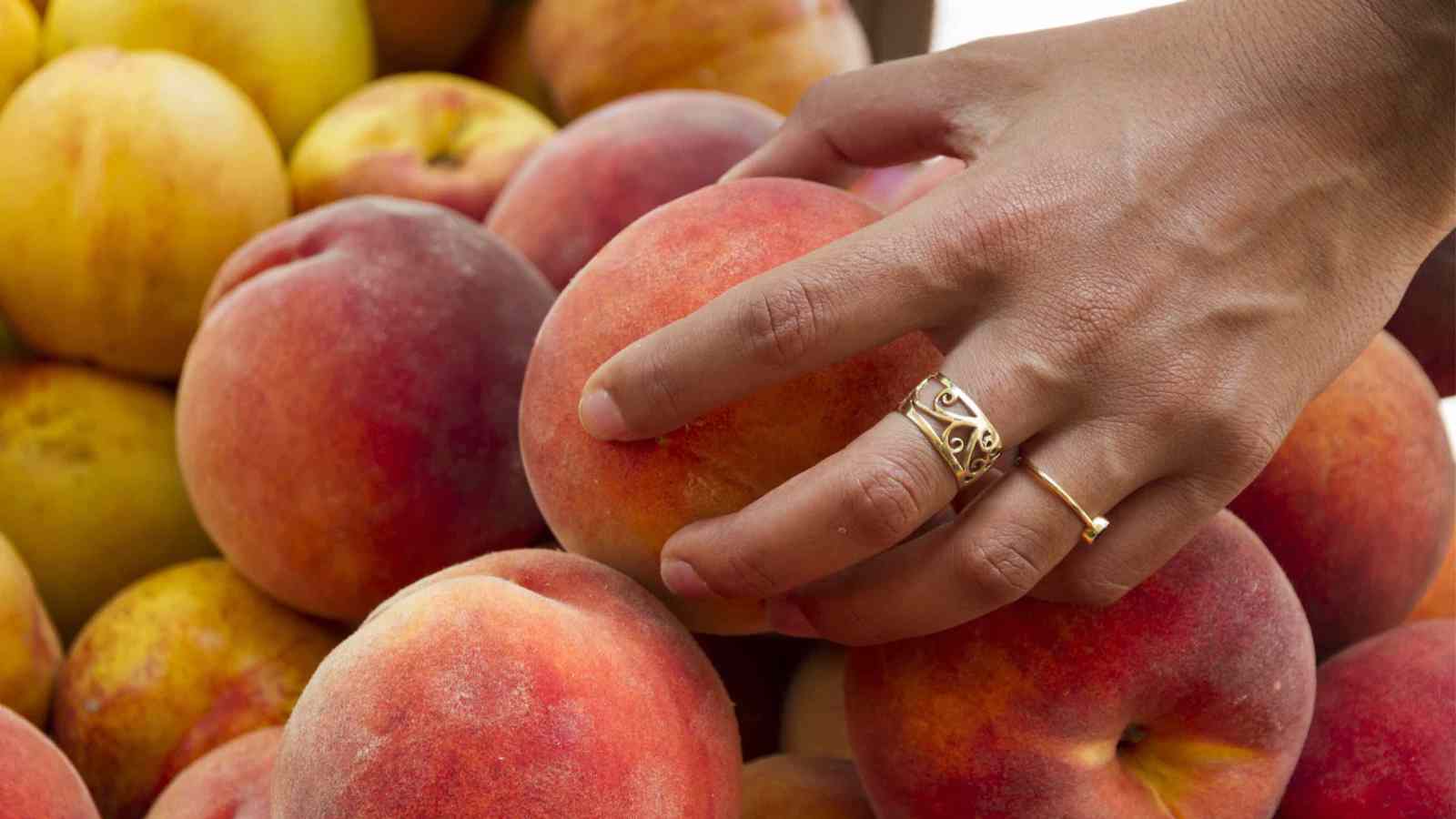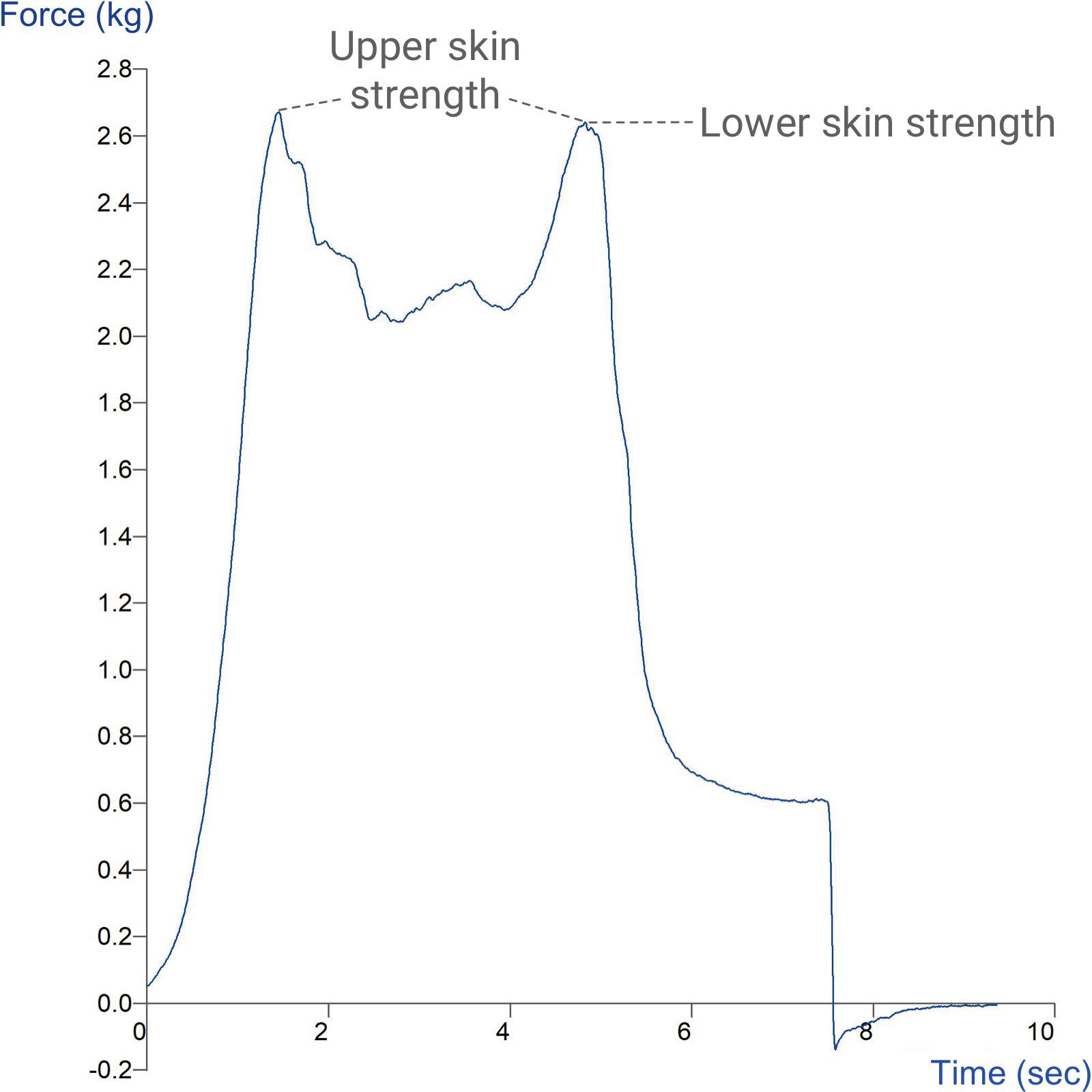How to measure ripeness

Ripeness: definition and importance
Ripeness refers to the stage at which fruits or vegetables are ready to be harvested or consumed. It is often determined by the texture and firmness of the product, which change significantly during the ripening process and is a key factor in determining the quality and marketability of fresh produce. Bioyield point is a measurement that growers often use which indicates the initial cell rupture in whole fruit and may be used as a criterion for maximum allowable load that the sample can sustain without showing any visible damage. Measuring ripeness or ‘bioyield point’ is crucial for ensuring that produce reaches consumers in the desired "fresh-picked" condition, while also influencing decisions about harvesting, transportation, and storage.
The Texture Analyser provides an objective method for assessing the firmness, softness, flexibility and compressibility of fruits and vegetables. These properties change significantly as a fruit or vegetable ripens, providing a quantifiable way to assess ripeness and allowing for more precise management of their quality, shelf life, and readiness for consumption.
Firmness/softness
These are critical indicators of ripeness. As a fruit ripens, it generally becomes softer due to the breakdown of cell walls and the conversion of starches into sugars. Unripe fruits tend to be firm and resistant to compression. A higher force is required to compress or penetrate the fruit, resulting in a high peak force on the graph. Ripe fruits are softer and require less force to compress. The peak force on the graph is lower, indicating that the fruit deforms more easily under pressure.
Fracturability/brittleness
This refers to how easily the fruit breaks under stress. As fruits ripen, they generally become less brittle and more pliable/flexible. Unripe fruits or vegetables, such as apples or pears, are more brittle and fracture easily under pressure, showing a sharp peak followed by a quick drop on the force graph. Ripe fruits are less brittle and more flexible, showing a gradual force buildup and a softer texture with less pronounced fracturing.
Further example applications of ripeness testing
Ripeness testing using a Texture Analyser helps measure the mechanical properties of fruits and vegetables, providing valuable insights into their firmness, softness, and overall texture. Below are key applications:
- Fruit firmness testing: Measuring the firmness of fruits like apples, peaches, and pears to assess their ripeness by applying controlled force to penetrate the skin or flesh.
- Avocado ripeness assessment: Evaluating the ripeness of avocados by measuring the force required to penetrate the skin or pulp to determine their readiness for consumption.
- Tomato texture analysis: Assessing the firmness of tomatoes for use in salads or sauces by measuring the force needed to compress them in bulk and evaluate their ripeness.
- Banana ripeness testing: Determining the ripeness of bananas by measuring the force required to peel, bend or cut into the banana to assess its firmness.
- Grape berry texture analysis: Assessing the ripeness of grape berries for wine production by measuring the force needed to pull from the vine or crush a berry and evaluate its texture.
- Citrus fruit texture analysis: Determining the ripeness of citrus fruits by measuring the force needed to peel or squeeze them to assess their texture and juiciness.
In these examples, a Texture Analyser applies controlled forces/distances to fruits and vegetables, allowing for the quantification of firmness and texture, which serve as indicators of ripeness or maturity. These measurements support quality control and decision-making in the agricultural and food industries.
Typical probe/attachment used for measurement
The assessment of fruit/vegetable firmness could be measured by a single or multiple penetration test depending on the homogeneity of the sample. Bioyield point (force to puncture the skin) is usually performed with a single penetration test and has traditionally involved Magness-Taylor Probes.
In a typical ripeness measurement test, a probe is used to penetrate the fruit to measure resistance, indicating firmness. Bioyield point measures the force required to cause initial cell rupture, providing insights into texture changes during ripening.
Sometimes it is advantageous to test a number of samples at a time to optimise repeatability of measurement.
The test type is chosen according to the size, form, homogeneity etc. of the sample and can therefore be derived from a single piece compression, bulk compression, bending, penetration or cutting tests as is most appropriate. Whilst performing one of these tests it is not uncommon to be able to obtain a number of other textural parameters that are also possessed by the product.
For example:
Flexibility would be assessed by imitating what the consumer does using a Three Point Bend Rig, like this:
Other measurements of interest might be ‘Detachment Force’ – the force to remove produce in order to harvest or the force to bite into a sample (‘Bite Force’ using a Cutting Test), both of which can be imitated on a Texture Analyser easily.


Typical graphs
Multiple penetration test
When measuring ripeness, the force vs distance/time graph typically shows an obvious first peak representing the amount of force needed to penetrate the sample. In the case of the Multiple Pea Test Rig, holes in the attachment underneath the samples allow complete penetration through the samples and therefore the presence of two peaks represents the force to penetrate the upper then lower skin.
How to interpret the Texture Analyser graph
When measuring ripeness, the force vs distance/time (or stress vs strain) graph typically shows an obvious first peak representing the amount of force needed to penetrate the sample. From the graph you can observe/obtain the following:
- Firmness
- Bioyield point
- Bioyield energy
- Resilience
- Rupture point
- Rupture energy
- Apparent modulus of elasticity
- Stiffness
- Rigidity
- Detachment force
- Skin rupture force
- Work of penetration
- Work of compression
- Toughness
- Bite force
- Skin strength
 Typical curve indicating key analysis points of a ripeness test of a single sample
Typical curve indicating key analysis points of a ripeness test of a single sample
 Typical curve indicating key analysis points of a ripeness test of a multiple sample
Typical curve indicating key analysis points of a ripeness test of a multiple sample
A full explanation of these curves and their analysis can be accessed within Exponent Connect software. Existing Exponent users can upgrade to Exponent Connect specification.
Below is a video example of how we can help you understand curve analysis for an example property.
Key factors affecting ripeness measurement
- Time since harvest: For climacteric fruits, the duration since harvest can significantly affect ripeness measurements, as these fruits continue to ripen post-harvest.
- Probe geometry: The shape and size of the probe used in ripeness testing significantly influence the measurement results, as different probe geometries interact differently with the fruit's surface and internal structure, affecting parameters such as firmness readings and penetration force.
- Temperature: Warmer temperatures generally accelerate the ripening process, while cooler temperatures slow it down. This is why many fruits are stored in refrigeration to delay ripening.
Optimising ripeness measurement and analysis: The Stable Micro Systems advantage
The Stable Micro Systems Texture Analyser excels in optimising ripeness measurements through its comprehensive approach and versatile capabilities. It performs multiple tests, including single and multiple penetration tests, to assess various ripeness indicators such as firmness, bioyield point, resilience, and skin strength.
The Texture Analyser’s precise measurements and detailed force-distance-time profiles enable in-depth analysis of ripeness characteristics. Its customisable test settings, including specialised tools like Magness-Taylor Probes, ensure adaptability to different types of produce.
The system's ability to measure critical properties such as work of penetration, compression, and apparent modulus of elasticity makes it invaluable for assessing fruit and vegetable ripeness. Furthermore, its flexibility in testing multiple samples simultaneously optimises repeatability and accounts for natural variations.
This combination of versatile testing capabilities, precise measurements, comprehensive analysis, and industry-relevant assessments makes the Texture Analyser the ideal choice for researchers and producers seeking to refine ripeness evaluation methods and maintain quality standards in the fresh produce industry.
A choice of probes to imitate consumer interaction at micro-level accuracy in force and distance.
Comprehensive analysis of graph features collecting multiple parameters.
Ability to additionally measure sound using an Acoustic Envelope Detector.
Adjust settings to match specific product requirements or simulate real-world usage conditions.
If you need help with your ripeness measurements, we offer unrivalled support.
Be guided through the steps to successful testing and analysis of ripeness.






